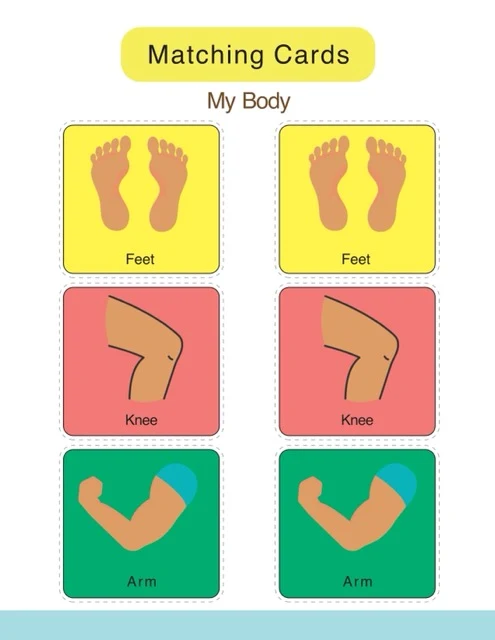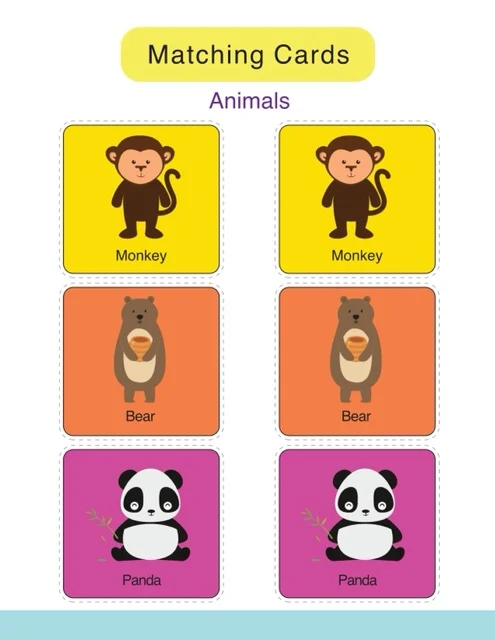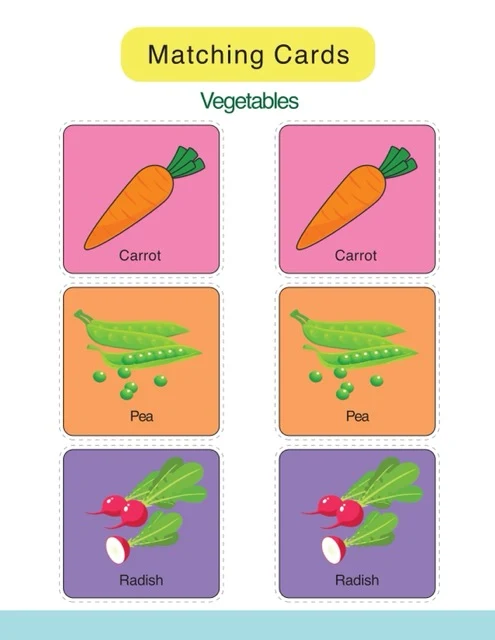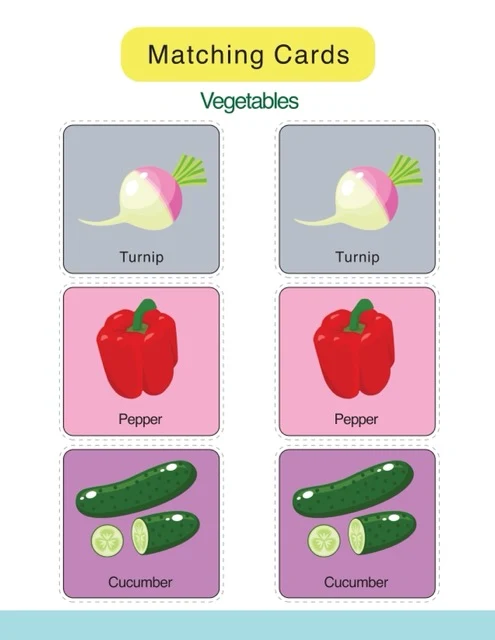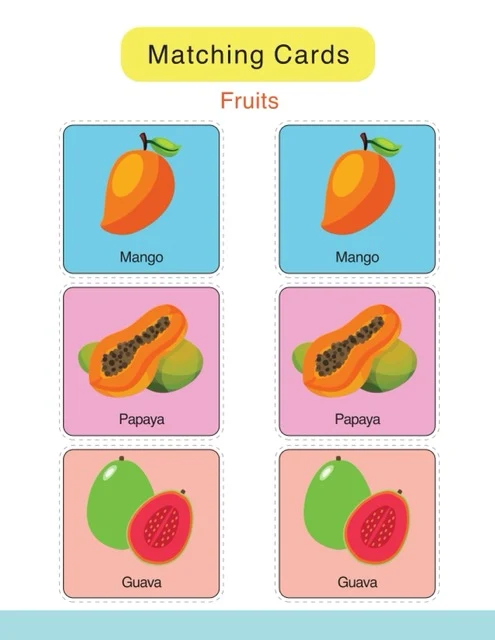Matching Card Games: Cognitive Skills & Educational Value
Matching card games are analyzed across several sources, highlighting their core mechanics of pairing cards based on various criteria. These games foster cognitive skills like memory and concentration, and are adaptable for different ages and skill levels through modifications in card quantity, image complexity, and rule variations. The games' thematic versatility, encompassing letters, numbers, and various objects, makes them valuable educational tools, enhancing learning through engagement and hands-on experience. Finally, the sources discuss both physical and digital formats, emphasizing the potential for creating customized games to meet specific learning objectives.
Matching Card Games: A Comprehensive Analysis
Matching Card Games: A Comprehensive Briefing
This briefing document analyzes the key themes and insights derived from three sources focusing on matching card games: "Matching Card Games: A Comprehensive Guide," "Matching Card Games: A Study Guide," and "Testing Theme: Matching Cards.pdf."
Core Mechanics and Skill Development:
Matching card games, at their core, involve pairing cards based on various criteria like images, letters, or numbers. The "Comprehensive Guide" defines them as educational games that foster a range of skills:
●
Memory: Recalling the position of previously revealed cards.
●
Concentration: Maintaining focus to effectively find matches.
●
Visual Recognition: Identifying and discriminating between different visual elements on the cards.
●
Cognitive Development: Enhancing logical thinking and problem-solving abilities.
Versatility and Adaptability:
One of the strengths of matching card games is their adaptability across different ages and skill levels. The "Study Guide" highlights that adjustments can be made by:
●
Modifying card quantity: Using fewer cards for younger or less experienced players.
●
Adjusting image complexity: Employing simpler visuals for beginners and more intricate designs for advanced players.
●
Introducing rule variations: Increasing complexity with challenges like matching three cards instead of two.
This adaptability makes them valuable tools for differentiated instruction, catering to individual learning needs.
Themes and Educational Applications:
Matching card games are not limited to a single format and can be centered around diverse themes. Popular themes, as mentioned in the "Comprehensive Guide," include:
●
Alphabet and Letters: Matching uppercase and lowercase letters or letter-to-picture associations.
●
Numbers: Pairing numerals with quantities or corresponding number words.
●
Animals, Food, Objects: Matching based on visual recognition and categorization of these items.
The "Testing Theme" document visually reinforces this thematic diversity, showcasing examples like:
●
Matching Uppercase & Lowercase Letters: Reinforcing letter recognition.
●
Matching Numbers and Quantities: Developing number sense and counting skills.
●
Matching Traditional Costumes & Flags of Different Countries: Introducing cultural elements and global awareness.
The "Study Guide" emphasizes the educational benefits of these games:
●
Engagement and Fun: Gamification makes learning enjoyable and motivating.
●
Hands-on Learning: Physical interaction with cards enhances learning through tactile experience.
●
Assessment Tool: Educators can observe students' cognitive skills and learning progress.
Beyond Traditional Formats:
While physical cards are the classic format, the "Study Guide" notes the rise of Digital Matching Games. These online and app-based versions offer convenience and often incorporate interactive features. This expands the accessibility and potential applications of matching card games in various learning environments.
Creating Customized Games:
The "Comprehensive Guide" provides a simple framework for creating custom matching card games:
1.
Choose a Theme: Select a relevant topic aligned with learning objectives.
2.
Find Images: Gather or create images that represent the chosen theme.
3.
Print and Cut: Prepare the cards, ensuring duplicates for matching pairs.
This process empowers educators and individuals to tailor games to specific learning goals and interests.
Conclusion:
Matching card games offer a versatile and engaging approach to learning. Their adaptability, thematic diversity, and accessibility through both physical and digital formats make them valuable tools for education, cognitive development, and entertainment. By understanding the core mechanics, benefits, and creative potential of matching card games, we can leverage them effectively to foster meaningful learning experiences.
Matching Card Games: A Comprehensive Guide
Matching Card Game FAQ
1. What are Matching Cards?
Matching Cards are a type of educational game where players try to find pairs of cards that match. The cards can feature various images, letters, numbers, or even words.
2. What skills do Matching Card games develop?
Matching Card games help develop a range of skills, including:
●
Memory: Players need to remember the location of cards they have seen.
●
Concentration: Focusing on the task is essential to find matches.
●
Visual Recognition: Identifying matching images or symbols is key to the game.
●
Cognitive Development: Matching games promote logical thinking and problem-solving.
3. What are some common themes for Matching Card games?
Matching Card games come in a variety of themes to suit different interests and learning objectives. Some popular themes include:
●
Alphabet and Letters: Matching uppercase and lowercase letters or letters to pictures.
●
Numbers: Matching numerals to quantities or number words.
●
Animals: Recognizing and matching different animal pictures.
●
Food: Pairing up images of various foods.
●
Objects: Matching everyday items or objects from specific categories.
●
Dinosaurs: Learning about and matching different types of dinosaurs.
4. How do you play a Matching Card game?
Here are the basic rules of a Matching Card game:
1.
Set Up: Shuffle the cards and lay them face down in a grid pattern.
2.
Taking Turns: Players take turns flipping over two cards at a time.
3.
Finding Matches: If the cards match, the player keeps the pair and takes another turn.
4.
Mismatches: If the cards don't match, they are flipped back face down, and the next player takes their turn.
5.
The Winner: The game continues until all the matches are found. The player with the most pairs wins!
5. Can Matching Card games be adapted for different ages and abilities?
Yes! Matching Card games can be easily modified to suit different levels. Here are a few ways:
●
Number of Cards: Use fewer cards for younger children or beginners.
●
Complexity of Images: Choose simple, clear images for early learners, and more intricate pictures for older players.
●
Adding Rules: Introduce variations like matching three cards instead of two for added challenge.
6. What are the benefits of using Matching Card games for educational purposes?
Matching Card games offer numerous benefits in an educational setting:
●
Engaging and Fun: The game element makes learning enjoyable and motivates students.
●
Hands-on Learning: The tactile experience of handling cards reinforces learning.
●
Differentiated Instruction: Games can be adjusted to meet individual needs and learning styles.
●
Assessment Tool: Teachers can observe students' memory, concentration, and recognition skills.
7. Are there any digital versions of Matching Card games?
Yes, many websites and apps offer digital versions of Matching Card games. These can be convenient for individual play or for use in classrooms with interactive whiteboards or tablets.
8. How can I create my own Matching Card game?
Creating your own Matching Card game is simple and allows you to tailor it to specific topics or learning goals.
●
Choose a Theme: Select a theme relevant to your needs.
●
Find Images: Gather pictures or create your own using drawing tools or clipart.
●
Print and Cut: Print the images twice to create matching pairs. Cut the cards out to an appropriate size.
●
Laminate (Optional): Laminating the cards makes them more durable.
●
Play and Learn! Enjoy your custom Matching Card game.
Matching Card Games: A Study Guide
Matching Card Games: A Study Guide
Short Answer Quiz
Instructions: Answer the following questions in 2-3 sentences each.
1.
What are the five main skills developed by playing matching card games?
2.
Describe three common themes used in matching card games.
3.
Briefly outline the basic rules of playing a matching card game.
4.
How can you adjust a matching card game for players of different ages and abilities?
5.
List three educational benefits of using matching card games.
6.
Are there alternatives to traditional card-based matching games? Explain.
7.
What are the first two steps in creating your own matching card game?
8.
Observing "Matching Cards.pdf," what type of matching is depicted in the section titled "Matching Uppercase & Lowercase Letters?"
9.
Looking at "Matching Cards.pdf," identify two distinct themes related to cultural elements or practices.
10.
"Matching Cards.pdf" features several sections with variations on number matching. Describe two of these variations.
Short Answer Quiz: Answer Key
1.
Matching card games develop memory, concentration, visual recognition, cognitive development, and logical thinking/problem-solving skills.
2.
Popular themes for matching card games include animals (matching pictures), food (pairing food images), and the alphabet (matching uppercase and lowercase letters or letter to pictures).
3.
To play, shuffle the cards and lay them face down. Players take turns flipping two cards. Matching pairs are kept, and the player takes another turn. Non-matching cards are flipped back, and the next player goes. The game ends when all matches are found.
4.
Games can be adjusted by using fewer cards for younger players, choosing simpler images for early learners, or adding rules like matching three cards for a greater challenge.
5.
Educational benefits include making learning engaging and fun, providing hands-on learning experiences that reinforce learning, and offering opportunities for differentiated instruction.
6.
Yes, digital versions of matching games are available as websites and apps. These are suitable for individual play or classroom use with interactive whiteboards or tablets.
7.
The first two steps are choosing a relevant theme and then gathering or creating images that fit that theme.
8.
This section depicts matching uppercase letters to their corresponding lowercase letters.
9.
Two themes showcasing cultural elements are "Matching Traditional Costumes" (clothing) and "Matching Flags of Different Countries."
10.
"Matching Numbers 1 to 10" shows basic numeral matching, while "Matching Numbers and Quantities" pairs numerals with visual representations of their quantities.
Essay Questions
1.
Discuss the importance of visual recognition in playing matching card games. How does this skill relate to other cognitive abilities?
2.
Explain how matching card games can be used as an effective tool for differentiated instruction. Provide specific examples to support your argument.
3.
Analyze the advantages and disadvantages of using digital versus physical matching card games in educational settings.
4.
Imagine you are designing a matching card game to teach young children about environmental conservation. Describe your chosen theme, the types of images you would include, and any additional rules or elements that would enhance the learning experience.
5.
Critically evaluate the claim that playing matching card games can improve memory function in both children and adults. Support your evaluation with evidence from research or relevant studies.
Glossary of Key Terms
Matching Card Games: A category of games where players try to find pairs of matching cards that may feature images, letters, numbers, or words.
Cognitive Development: The process of acquiring intelligence and developing mental skills, including thinking, problem-solving, and memory.
Visual Recognition: The ability to identify and differentiate between objects, shapes, and symbols through sight.
Concentration: The ability to focus one's attention on a particular task or stimulus, essential for successful gameplay in matching card games.
Differentiated Instruction: An educational approach that tailors teaching methods and materials to meet the individual needs and learning styles of students.
Digital Matching Games: Electronic versions of matching card games accessible through websites and apps, offering interactive and often customizable gameplay.
Theme: A central topic or idea around which a matching card game is designed, such as animals, food, or the alphabet.
Matching: The act of pairing two cards based on a specific criterion, such as identical images, corresponding letters, or matching numbers and quantities.

























